#UNCLOS
Text
The pillaging in the war on Gaza:
Israel as an occupier has no right to award licences in areas that it does not hold sovereignty over under any circumstances.
Palestine is a party to the UN Convention on the Law of the Sea (UNCLOS) and has declared its maritime boundaries in accordance with these principles.
#palestine#palestinians#gaza#genocide#israeli apartheid#israeli occupation#free palestine#free gaza#war crimes#justice#idf terrorists#iof terrorism#unrwa#unclos#oil and gas#license#illegal#illegal occupation#icj#icc#the dispossessed#state sponsored terrorism#state sponsored theft#natural gas#us weapons#us complicity#uk complicity#europe
21 notes
·
View notes
Text
The former Commandant of the Philippine Coast Guard (PCG) retired Admiral Joel Garcia effectively revealed the Truths about the Philippines' Claims in the South China Sea (SEA) that the Pro-United States (US), Anti-China Forces have been trying to hide from the Filipino People, like the Fact that these Claims are in Fact NOT officially recognized in the United Nations (UN).
This was initially released as an Article last March 19, 2024 at https://therhk111philippinedefenseupdates.blogspot.com/2024/03/philippines-claims-south-china-sea-also-recognized-world.html
#rigobertotiglao#philippines#facebook#southchinasea#scs#admiral#joelgarcia#philippinecoastguard#pcg#commandant#rodrigoduterte#sovereignty#sovereignrights#unitednations#westphilippinesea#wps#diplomacy#war#megaphonediplomacy#territorialclaim#malaysia#vietnam#china#taiwan#unitedstates#jaytarriela#unclos#unitednationsconventiononthelawofthesea#enhanceddefensecooperationagreement#edca
0 notes
Text
The United Nations Convention on the Law of the Sea (UNCLOS)
Click here to check the law of the sea...
#sea laws by united nation#UNCLOS#what is UNLOS#sea laws#laws bu united nation#ocean laws by united nation#marine laws#international ocean law by UN#international sea laws
0 notes
Text
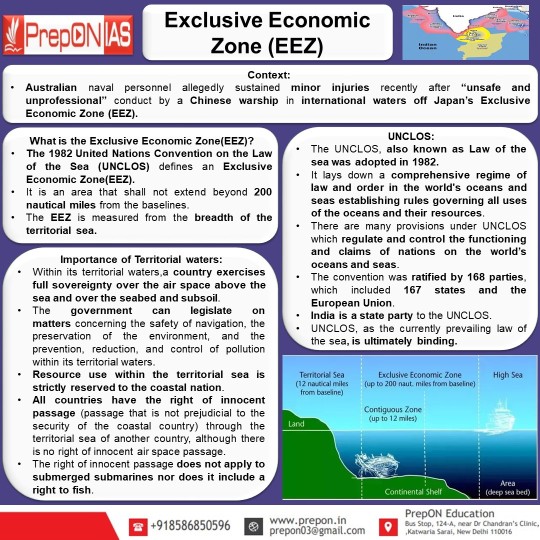
Exclusive Economic Zone (EEZ)
#ExclusiveEconomicZone#EconomicZones#austrialia#japan#UNCLOS#internationalwaters#TerritorialWater#upsc#upscprelims#upscprelims2024#upscexam#upsc2024#upscaspirants#currentaffairs2023#dailynews#generalknowledgeindia
0 notes
Text
Philippines Prevails: Defying China's Aggression

A Defiant Stand Against Repeated Harassment
In a resolute declaration, the United States pledged unwavering support to its Philippine ally as tensions escalated in the South China Sea. The People's Republic of China's (PRC) repeated harassment in the region has raised concerns, with the U.S. emphasizing its commitment to standing shoulder-to-shoulder with the Philippines.
International Tribunal Rejects PRC's Claims
The PRC's actions, deemed inconsistent with international law, have faced condemnation. The 2016 ruling by an international tribunal, binding on both the Philippines and the PRC, emphatically stated that the PRC holds no lawful territorial or maritime claim to the Second Thomas Shoal. The call for respecting high seas freedoms of navigation reverberates as the United States urges the PRC to adhere to international law.
Mutual Defense Treaty Strengthens Resolve
Reaffirming the strength of the U.S.-Philippines alliance, the United States highlights the applicability of Article IV of the 1951 U.S.-Philippines Mutual Defense Treaty. This extends protection to armed attacks on Philippine armed forces, public vessels, or aircraft, including those of its Coast Guard, anywhere in the South China Sea.
Historical Agreements Cement Alliance
The US-Philippines Enhanced Defense Cooperation Agreement (EDCA), signed in 2014, plays a pivotal role. Allowing the U.S. military access to Philippine military bases, including those in the South China Sea, this agreement bolsters the strategic partnership between the two nations.
The Legal Battle and International Support
Philippines Prevails in UNCLOS Arbitration
In 2016, the Philippines initiated arbitral proceedings under the United Nations Convention on the Law of the Sea (UNCLOS) against the PRC's nine-dash line claim to the South China Sea.
Subsequently, in a landmark decision in 2020, the Permanent Court of Arbitration (PCA) ruled decisively in favor of the Philippines. The PCA deemed the PRC's claim invalid and explicitly acknowledged violations of the Philippines' sovereign rights in its exclusive economic zone (EEZ). Importantly, the United States stands unwaveringly firm in its support of the PCA ruling, considering it not only "final" but also "legally binding."
Philippines-China Tensions in Recent Years
Escalating Conflicts in the South China Sea
The PRC's actions in the South China Sea have escalated tensions, creating conflict situations in recent years.
Seizure of Scarborough Shoal
In 2016, the PRC seized Scarborough Shoal, a Philippine-controlled reef, amplifying territorial disputes in the region.
Militarization and Harassment
Subsequent years saw the PRC engaging in militarization efforts, constructing artificial islands and military facilities on disputed reefs and shoals. The PRC's Coast Guard further intensified the situation in 2018, harassing and blocking Philippine vessels and resupply missions in the South China Sea.
Provocative Actions and Collisions
The situation reached a boiling point in 2021 when the PRC's Coast Guard fired water cannons at a Philippine Coast Guard vessel. In 2023, dangerous maneuvers by the PRC's Coast Guard near Philippine vessels resulted in collisions, endangering Filipino lives and escalating the risk of accidents in the South China Sea.
In summary, the United States' unequivocal support for the Philippines comes at a crucial juncture, with legal rulings and historical agreements reinforcing the alliance against the backdrop of escalating tensions in the South China Sea.
Sources: THX News & US Department of State.
Read the full article
#ArticleIV#DangerousManeuvers#DefenseCooperation#HighSeasFreedoms#Internationallaw#MutualDefenseTreaty#PhilippineBases#Philippines-ChinaTensions#PRC'sActions#ScarboroughShoal#SecondThomasShoal#SouthChinaSeatensions#TerritorialDispute#UNCLOS#USMilitaryAccess#US-PhilippinesAlliance
0 notes
Text
Commemorate the fortieth anniversary of the United Nations Convention on the Law of the Sea.
youtube
Watch the UNCLOS 40th anniversay event.

#40th anniversary#International Maritime Organization (IMO)#UNCLOS#Law of the Sea#Convention#Oceans and Seas#Youtube
0 notes
Text
World’s Top Five Mightiest Icebreaker Fleets

© Sputnik/Vladimir Astapkovich/Go to the Mediabank
In December 2023, the United States unilaterally announced a claim to a huge chunk of seabed well outside its internationally-recognized boundaries off the northern coast of Alaska. Does the US have the resources to enforce its claim? And how do its capabilities stack up against those of other major maritime powers? Sputnik explores.
The State Department has a problem. Firstly, to legally protect its encroachment on the piece of seabed in the Arctic which it claims as part of its continental shelf, Washington would have to pay lip service to the 1982 United Nations Convention on the Law of the Sea, which outlines the rules for states claiming continental shelves beyond the internationally recognized 200 nautical mile limit. The first rule? Signing and ratifying the treaty, and only ten years after that submitting claims.
Secondly, if it proceeds with its continental shelf claims without UN approval, the US would have to be able to protect its claims by the tangible threat of force, including by using ships and aircraft capable of patrolling the area. The US claim announced in December is not expected to create any disputes with Russia, but will overlap with Canada over a piece of the floor of the Beaufort Sea off the Northwest Territories.
Unfortunately for Washington, its geopolitical appetites don’t appear to match its capabilities. Not only is its icebreaker fleet surprisingly tiny, but, according to recent reports, its engineers have apparently forgotten how to reliably produce the thick, hardened steel needed to reinforce Arctic-going ships’ hulls.
For these and other reasons, including decades of neglect of its existing icebreaker potential, the United States just barely scrapes into the list of top five countries by icebreaker capability.
#5: United States 🇺🇸
America’s national icebreaker fleet consists of the US Coast Guard’s Polar Star, a Lockheed Shipbuilding-built icebreaker commissioned in 1976, placed in reserve in 2006, and recommissioned in 2012. The 13,500-ton Polar-class vessel is the only heavy icebreaker in the US fleet capable of sustained, independent operations in the thick ice-covered waters of the Arctic Ocean, able to crack through ice an impressive 6.4 meters thick. The USCGC Healy is the other icebreaker operated by the Coast Guard, displacing 16,257 tons full load, plowing through ice up to 3 meters thick in ramming mode, and hailed as America’s most technologically advanced icebreaker. The ship was commissioned in 1999.
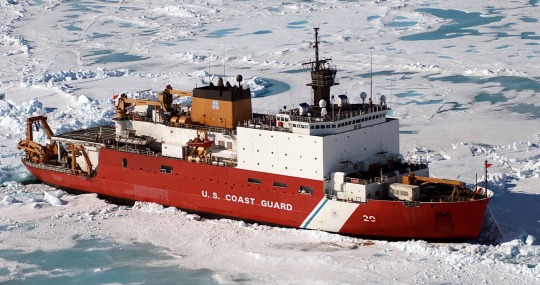
U.S. Coast Guard Cutter Healy (WAGB-20) sits approximately 100 miles north of Barrow, Alaska, in order to conduct scientific ice research. © Wikipedia/U.S. Coast Guard/DoD
Besides that are three smaller icebreakers used by the National Science Foundation, an independence federal agency engaged in research into all non-medical fields of science. Its ships, built in the 1990s and mid-2010s, include the Nathaniel B Palmer, the RV Laurence M. Gould and the RV Sikuliaq. These vessels operate comfortably in between 0.3 (the Gould) and 0.75 meters (the Sikuliaq) of ice. The Gould and the Palmer are typically stationed in Antarctic waters, while the Sikuliaq, an indigenous word meaning ‘young sea ice’, operates off Alaska.
The Coast Guard has ambitious plans for expansion, expecting to get three new heavy icebreakers, and three medium ones, in the coming years and decades. Delivery of the first ship of the new fleet has been delayed from 2024 until at least 2027, with the service requesting $125 million for the purchase and modification of a commercially available polar icebreaker built in the USA to bridge the gap as the flagship Polar Star rapidly approaches the 50-years-old mark.
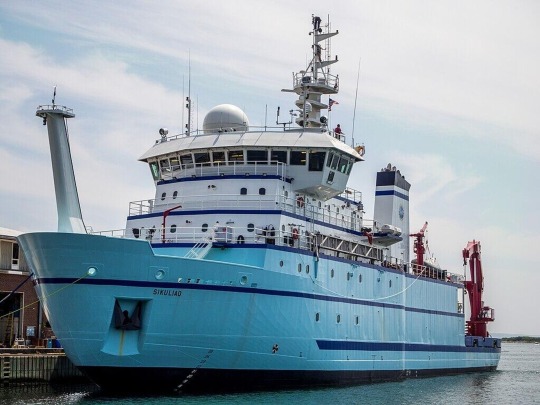
Icebreaking research vessel Sikuliaq in Woods Hole, Massachusetts. © Photo: James Buchanan
#4: Sweden 🇸🇪
Sweden, which does not have direct access to the Arctic from its coast, or any maritime territory above the Arctic Circle, nonetheless maintains an impressive fleet of icebreakers, mostly for patrolling the northernmost waters of the Gulf of Bothnia and in at least one case, a large inland lake. Sweden operates up to seven icebreakers, five of them – the Ale, the Atle, the Frej, the Oden and the Ymer, run by the Swedish Maritime Administration. The Ale is a 1,540 ton escort icebreaker, purpose built in the 1970s to sail in Lake Vanern, situated in southern Sweden about 150 km southeast of the border with Norway.

Sweden's Oden icebreaker pictured breaking up thick ice. © Photo: Swedish Maritime Administration.
The Atle, Frej and Ymer are Atle class icebreakers, built at the legendary Wartsila Helsinki Shipyard in Finland between 1974 and 1977. These ships are 104.5 meters long and displace 9,500 tons, and feature a dual rudder and dual bow propeller system that can crack ice at thicknesses of between 0.75 and 1 meters. The newest ship in Sweden’s icebreaker fleet is the Oden, a research vessel built in 1988 and originally tasked with escorting commercial vessels. The ship displaces up to 13,000 tons, and can power through ice up to 5 meters thick, with enough capacity to spare for operations in Arctic waters, pending supply support from a friend in the region. Sweden plans to built at least three new icebreakers, with the first expected to be delivered in 2027 at the earliest.
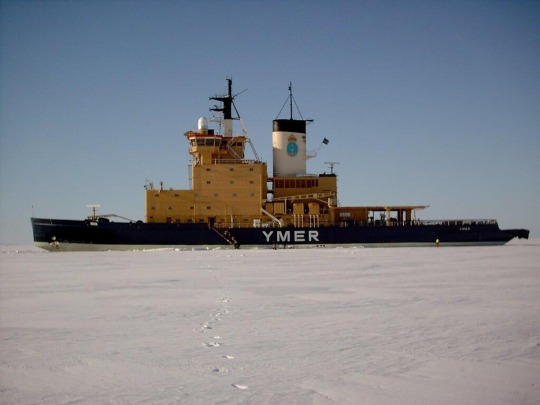
Sweden's Ymer icebreaker. © Photo: Marcus Bengtsson
#3: Finland 🇫🇮
Finland’s icebreaker fleet packs a surprisingly strong punch, facilitated by the country’s northern geography, and decades of successful shipbuilding cooperation and sales to its neighbors, Sweden and Russia. The country’s fleet, which includes nine major icebreaking ships, plus one icebreaking-capable special-use ship operated by the Navy, includes the oldest ships in this list: The Voima, commissioned all the way back in 1954, and refit in the late 1970s and again in 2016, is classed as an 1A Super icebreaker, enabling it to break up sea ice up to 1.2 meters thick at speeds of 2 knots.
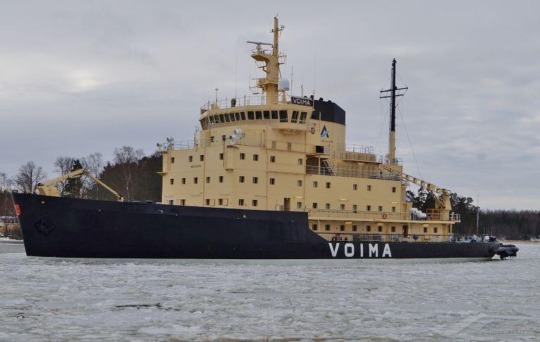
The Voima icebreaker, one of the oldest known icebreakers in operation. © Photo: Pekka Jarvinen
The Urho and Otso-class (two ships each) displace 9,660 tons and 9,222 tons, respectively, and were built in the 1970s and 1980s to operate in Gulf of Bothnia and Gulf of Finland waters, where ice can reach up to 45 cm thick during winter. The Navy-operated ship is called the Louhi, is owned by the Finnish Environmental Institute, and is classified as an oil and chemical spill response vessel. The ship has a 3,450-ton displacement, and can penetrate ice ridges up to an impressive 5 meters thick, while operating at speeds up to 9.5 knots in 1-meter thick ice.
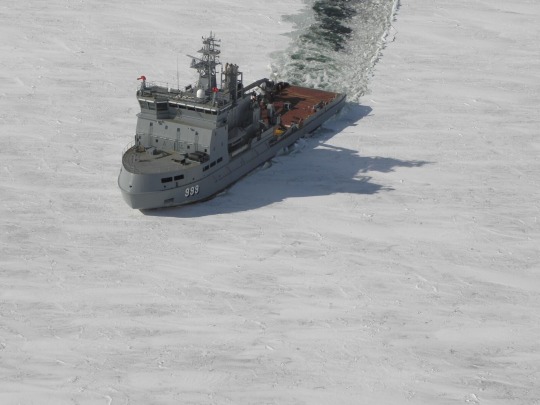
The Louhi, a unique Finnish multipurpose vessel design by ILS Oy Ship Design & Engineering with impressive icebreaking capabilities. © Photo: ILS Oy Ship Design & Engineering
#2: Canada 🍁 🇨🇦
Canada, Russia’s Arctic neighbor to the north, has an Arctic coastline stretching a whopping 162,000 kilometers thanks to 94 major and 36,400+ minor islands covering a territory of some 1.4 million square kilometers. That makes a large and diverse icebreaker fleet essential for assuring the country’s sovereign claims. Canada’s Coast Guard operates at least 15 icebreakers (about half of them capable of operations in the far north), at least three icebreaker/tug/supply vessels purchased from Sweden, and two offshore patrol vessels with icebreaking capabilities operated by the Navy.
The flagship of Canada’s icebreaking fleet is the Louis S. St-Laurent, a massive, 15,324 ton heavy icebreaker commissioned in 1969 and undergoing refits in the late 1980s and 2000, with room for two Bell 429 helicopters onboard and enough space to comfortably supply 46 crew for over 6 months at a time. The ship can break through ice between three and five meters thick, with its ice horn designed to protect the rudder.
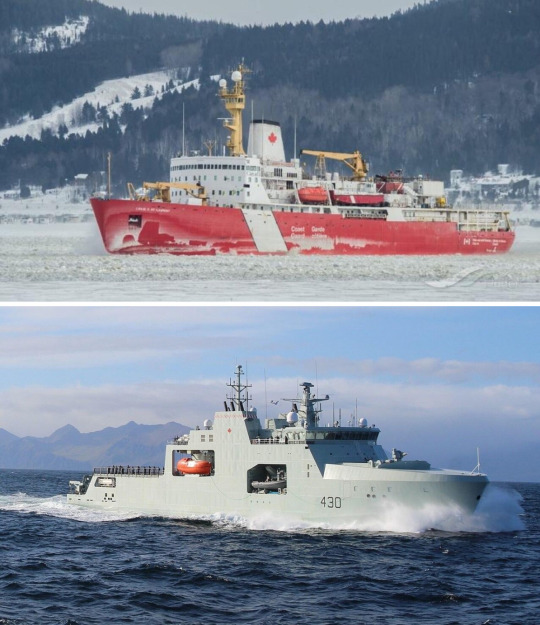
Top: Louis S. St-Laurent, the flagship and pride of the Canadian Coast Guard's icebreaker fleet. © Photo: Serg Tremblay Bottom: HMCS Harry DeWolf on patrol in Dutch Harbor, September 2021. © Photo: US Coast Guard
Other prominent vessels in the fleet include four ships of the Pierre Radisson-class of medium icebreakers, which weigh 8,180 tons fully loaded and can plow through ice a meter thick at speeds up to 6 knots, and the Martha L. Black class – featuring six light icebreakers built in the 1980s weighing about 4,740 tons full load, and operating off British Columbia, Quebec, Newfoundland and Labrador, and Nova Scotia.
The Canadian Navy’s icebreaking-capable warships including the HMCS Harry DeWolf and the HMCS Margaret Brooke, which can slash through first-year sea ice up to 120 centimeters thick.
#1 Russia 🇷🇺
Dwarfing the rest of the countries in this list, with more icebreakers than the rest of the planet put together, is Russia, whose fleet includes about 45 large icebreakers (seven of them nuclear-powered), well over a dozen off-shore icebreaking anchor-handling tug supply vessels, at least seven icebreaking-capable warships, and three research and survey vessels.
The nuclear-powered portion of the fleet includes the Yamal, the 50 Let Pobedy, the Taymyr, the Vaygach, and the brand new Project 22220 series Arktika, Sibir and Ural vessels, which were commissioned in 2020, 2021 and 2022, respectively (the fourth ship, the Yakutiya is set to join them this year, while the Chukotka, Leningrad and Stalingrad are expected by 2030). These massive, 173.3 meter-long ships have a complement of 75, helideck and hangar, and are propelled by two RITM-200 175 MWt-apiece nuclear reactors and twin turbo generators, allowing them to accelerate to speeds of up to 22 knots through open waters, or 1.5-2 knots in ice 2.8 meters thick (with the ability to operate in ice up to 4 meters thick at slower speeds).
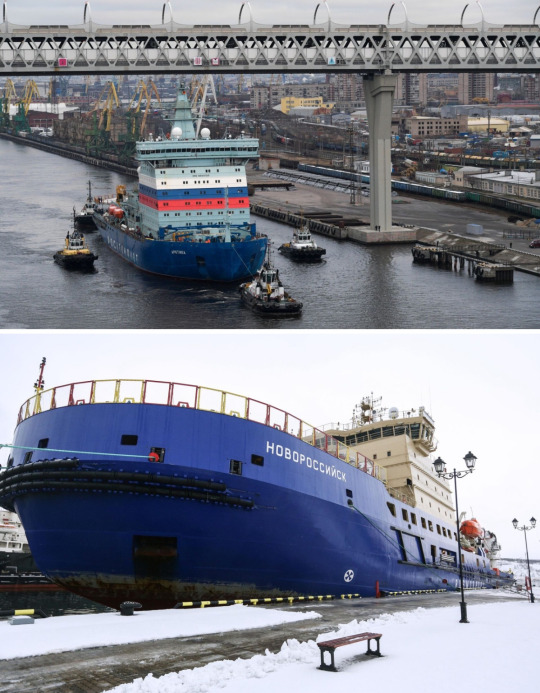
Top: Russia's Arktika-series nuclear-powered icebreaker being pulled along by tugs in a shipyard. © Sputnik/Aleksander Galperin/Go to the mediabank Bottom: Project 21900M diesel-electric icebreaker Novorossiysk in the harbor in Murmansk. © Sputnik/Pavel Lvov
Russia owes its nuclear icebreaking prowess to the Lenin, the world’s first nuclear-powered icebreaker, commissioned in 1959 and turned into a museum ship permanently docked in Murmansk in 1989.
An even larger icebreaker, the Project 10510 Rossiya, which is 219 meters long and displaces nearly 70,000 tons, will be able to crack through 4-meter thick ice with ease, and leave a large, 47.7 meter-wide path for any ships it happens to be escorting. The ship’s 127-person crew will be able to operate non-stop for up to 8 months at a time, enough to ensure comfortable year-round for operations through Russia’s Northern Sea Route passage.
Diesel-powered ships in the Russian icebreaking fleet include the Admiral Makarov, a veteran scientific and supply ship commissioned in 1975, seven ships total of the Kapitan Sorokin and Mudyug-class icebreakers built for the USSR by Finland in the 1970s and 1980s, and the new Project 21900 ships, the Moskva and the Sankt-Peterburg, built in 2008 and 2009, respectively. The latter displace 14,300 tons, and crack through ice up to 1.5 meters. A modernized model of the Project 21900, Project 21900M, has been built from 2015 onward, and includes the Vladivostok, Murmansk and Novorossiysk. Two more, the Arkhangelsk and the Vyborg, are on the way and may be delivered as soon as this year.
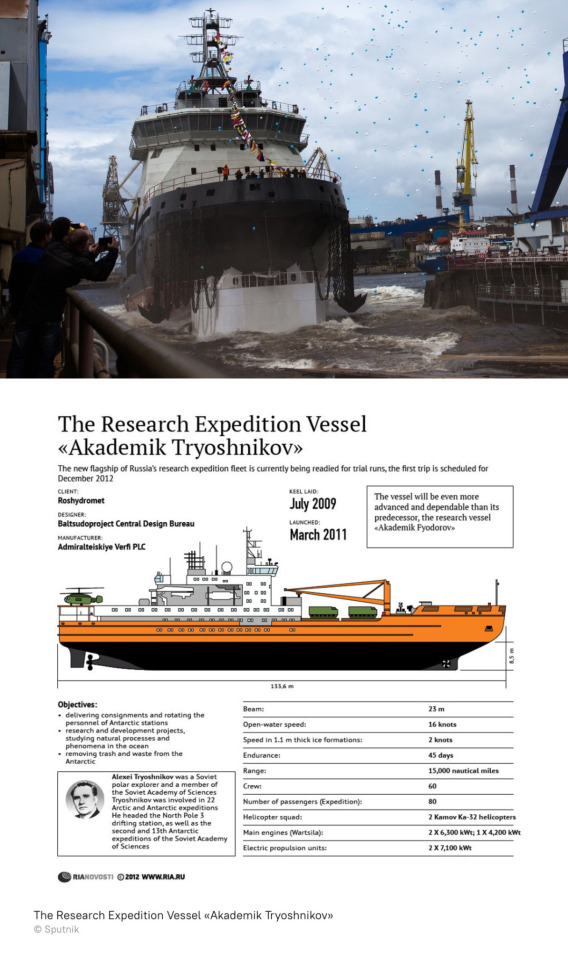
Top: The new generation diesel-electric icebreaker Ilya Muromets being launched into the water from its drydock. © Sputnik/Igor Russak/Go to the Mediabank
The Russian Navy’s complement of icebreakers includes the Ilya Muromets, a 6,000 ton-displacement vessel commissioned in 2017 featuring a unique contra-rotating propeller design, and the Evpatiy Kolovrat, which displaces 4,080 tons, and is expected to be commissioned by the Pacific Fleet later this year. The ships are expected to facilitate naval operations in ice up to 1.5 meters thick.
Finally yet importantly are Russia’s active icebreaking research ships, the Mikhail Somev, Akademik Fedorov and Akademik Tryoshnikov, built between the mid-1970s and the early 2010s. These vessels are between 133.5 and 141 meters long, displace between 16,200-16,500 tons, and are classed for independent operations through ice between 1.4 and 3.2 meters thick. Scientists the world over owe much of our fundamental knowledge about the most remote regions of the Arctic and Antarctic to Soviet and Russian icebreaking research ship technology, and to the many thousands of researchers and scholars who have worked aboard them over the decades.
— Ilya Tsukanov | Sputnik International | Sunday February 11, 2024
#World 🌎 | Russia 🇷🇺 | Sweden 🇸🇪 | Arctic 🐻❄️ 🥶 | Coast Guard | Navy#United Nations Convention on the Law of the Sea (UNCLOS) USCGC Healy | Sibir | Finland 🇫🇮 | US 🇺🇸#Icebreaker#Canada 🍁 🇨🇦
0 notes
Link
0 notes
Text
Tanzania and Mozambique Maritime Disputes: Analyzing the Law of the Seas
INTRO: Background on Tanzania and Mozambique Maritime Disputes
Tanzania and Mozambique, two coastal countries in East Africa, have been embroiled in a longstanding maritime dispute over the delimitation of their maritime boundaries in the Indian Ocean. The dispute mainly centers around the ownership and control of natural resources, including fishing grounds and potential offshore oil and gas reserves. The resolution of this dispute has important implications for both countries' security, economic development, and regional cooperation.
Examining the United Nations Convention on the Law of the Sea (UNCLOS)
The United Nations Convention on the Law of the Sea (UNCLOS), which came into force in 1994, provides the legal framework for resolving maritime disputes between states. UNCLOS establishes the rights and responsibilities of states in their use of the world's oceans, including the delimitation of maritime boundaries. Both Tanzania and Mozambique are parties to UNCLOS, and as such, they are bound by its provisions.
Delimitation of Maritime Boundaries: Key Legal Principles
When it comes to delimiting maritime boundaries, UNCLOS relies on several key legal principles. These principles include the equidistance principle, the principle of equitable principles, and relevant circumstances. The equidistance principle generally involves drawing a line equidistant from the baselines of the adjacent coastal states. The principle of equitable principles takes into account factors such as the length of the coastline, geographical proximity, and economic interests of the states involved. Finally, relevant circumstances allow for adjustments to be made based on specific geographical features or other relevant factors.
Analyzing Tanzania's Claims in the Maritime Dispute
Tanzania argues that the maritime boundary between itself and Mozambique should be determined based on the principle of equidistance. Tanzania contends that this approach would ensure fairness and stability in the delimitation process. Tanzania also emphasizes its historical use and occupation of certain areas, asserting its rights over the disputed waters. Furthermore, Tanzania highlights its economic interests in potential offshore oil and gas resources, which it believes should be under its exclusive control.
Evaluating Mozambique's Position in the Maritime Dispute
On the other hand, Mozambique asserts that the maritime boundary should be determined based on the principle of equitable principles. Mozambique argues that this approach would take into account its longer coastline and the economic interests of its coastal communities. Mozambique also emphasizes the need for a fair and equitable solution that takes into consideration the specific circumstances of the area, including the presence of geological features that could affect the delimitation process.
International Arbitration: Potential Resolution Mechanism
Given the complexity and sensitivity of the Tanzania and Mozambique maritime dispute, international arbitration may be a viable solution for resolving the issue. Both countries have the option to submit the dispute to an international tribunal or a court, such as the International Court of Justice or the International Tribunal for the Law of the Sea. Such a process would provide an impartial decision and help avoid further tensions between the two countries.
Implications for Regional Security and Economic Cooperation
The unresolved maritime dispute between Tanzania and Mozambique has broader implications for regional security and economic cooperation in East Africa. The dispute not only strains bilateral relations between the two countries but also creates uncertainty and potential conflicts over the utilization of shared maritime resources. A peaceful resolution would contribute to stability and foster cooperation in the region, allowing for joint exploitation of resources and the development of mutually beneficial economic projects.
Conclusion: Prospects for Resolving Tanzania and Mozambique Maritime Disputes
Resolving the maritime disputes between Tanzania and Mozambique is crucial for both countries' long-term stability and economic development. By adhering to the principles laid out in UNCLOS and engaging in diplomatic dialogue, the two countries have a path toward a peaceful resolution. International arbitration could provide an unbiased decision, helping to overcome the current impasse. Ultimately, resolving the maritime disputes will not only benefit Tanzania and Mozambique but also contribute to regional security and economic cooperation in East Africa. It is essential for both countries to work together and find a mutually acceptable solution that respects international law and promotes the shared interests of both nations.
===OUTRO:
Read the full article
#AnalyzingTanzania'sClaimsintheMaritimeDispute#Conclusion:ProspectsforResolvingTanzaniaandMozambiqueMaritimeDisputes#EvaluatingMozambique'sPositionintheMaritimeDispute#ExaminingtheUnitedNationsConventionontheLawoftheSea(UNCLOS)#InternationalArbitration:PotentialResolutionMechanism#INTRO:BackgroundonTanzaniaandMozambiqueMaritimeDisputes#TanzaniaandMozambiqueMaritimeDisputes:AnalyzingtheLawoftheSeas
0 notes
Text
Sejarah Baru: PBB Mengesahkan Perjanjian Laut Lepas
JAKARTA | KBA – Perjanjian internasional pertama di dunia untuk melindungi laut lepas diadopsi pada hari Senin (19/6) di Perserikatan Bangsa-Bangsa, menciptakan perjanjian lingkungan penting yang dirancang untuk melindungi ekosistem terpencil yang vital bagi umat manusia.
Sekretaris Jenderal PBB Antonio Guterres memuji perjanjian itu sebagai “pencapaian bersejarah” yang akan membentuk kerangka…

View On WordPress
#Biodiversity Beyond National Jurisdiction Treaty#Chili#India#Konvensi Hukum Laut#Majelis Umum PBB#Meksiko#PBB#pemanasan global#Perjanjian internasional#UNCLOS 1982
0 notes
Text
UK Government Adresses Piracy and Armed Robbery in the Gulf of Guinea

President,
Piracy and armed robbery has long been a threat to regional security in the Gulf of Guinea, and has a real human cost – from disruption of trade, to the use of kidnap for ransom.
We welcome the focus of our African partners on tackling this very real problem. We would make three brief points. The first is that this international effort is having a positive impact. We are pleased to note that there has been a continued decline in incidents of piracy in the Gulf of Guinea.
This is largely thanks to the strength of regional cooperation in tackling the issue. We are also proud of our own collaboration with partners to promote security and stability, following on from our G7 Presidency including the visit by HMS Trent last year to deter attacks on maritime trade.
The second is that, as we have heard, the Yaoundé Code of Conduct has provided a crucial framework that underpins this increased regional cooperation. We would urge signatory states and relevant regional bodies, all represented here today, to continue to enhance cooperation and collaboration.
Thirdly, it is of course vital that any efforts to tackle piracy and armed robbery comply with the United Nations Convention on the Law of the Sea (UNCLOS), which is the legal framework within which all activities in the ocean and seas are carried out.
In this context I should add that it is unfortunate that the Peacebuilding Commission was not able to reach consensus on its written advice for this session.
The final point is the most important. As set out in the concept note, the drivers of piracy remains complex and multi-faceted. We encourage a continued focus on the impact of poverty, youth unemployment and environmental degradation in contributing to criminal activity.
Engagement is needed at all levels, including community-based responses, and the UK will continue to work closely with partners in support of a coherent and integrated approach to tackling insecurity in the Gulf of Guinea.
Thank you, President.
Sources: THX News & Foreign, Commonwealth & Development Office.
Read the full article
#Driversofpiracy#GulfofGuinea#InsecurityintheGulfofGuinea#Maritimetrade#PeacebuildingCommission#Piracy#Povertyandcriminalactivity#Regionalcooperation#UnitedNationsConventionontheLawoftheSea(UNCLOS)#YaoundéCodeofConduct
0 notes
Text
Introduction to the United Nations Fish Stocks Agreement and Sustainable Fisheries processes at the United Nations.
The 1995 United Nations Fish Stocks Agreement (UNFSA) is an implementing agreement to the 1982 United Nations Convention on the Law of the Sea (UNCLOS) that aims at ensuring the long-term conservation and sustainable use of straddling fish stocks and highly migratory fish stocks. It provides an international legally binding framework for the conservation and management of the world's most commercially significant high seas fish stocks, including through regional fisheries management organizations.
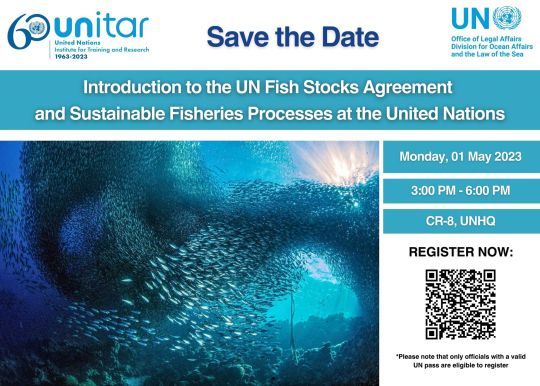
The seminar will serve to inform participants about the international legal framework for sustainable fisheries in UNCLOS and UNFSA, including the role of flag States, coastal States and regional fisheries management organizations.
#United Nations Convention on the Law of the Sea (UNCLOS)#United Nations Fish Stocks Agreement (UNFSA)#regional fisheries management organization#Fisheries
0 notes
Text
Promote a stronger, peaceful, and rule-based use of the ocean.
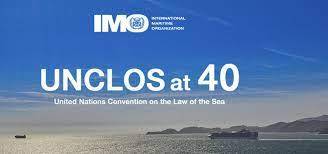
40th anniversary of the adoption of the United Nations Convention on the Law of the Sea (UNCLOS)
Remarks by H.E. Mr. Abdulla Shahid, President of the 76th session of the United Nations General Assembly
29 April 2022
Excellencies,
Distinguished colleagues,
I am delighted to welcome you all to the commemoration of the 40th Anniversary of the adoption of the UN Convention on the Law of the Sea, or UNCLOS.
Recognized as the ‘Constitution of the Sea’, UNCLOS is perhaps one of the most successful outcomes of rules-based multilateralism – culminating in a legally-binding document for our Ocean.
Today, UNCLOS continues to play a fundamental role in the development of international law, and in the promotion of peace, security, cooperation, friendly relations among all nations, and sustainable development of the ocean and sea.
As we commemorate this significant day, we must avail the opportunity to reflect on the achievements of UNCLOS, its universal and unified character, and take stock of our progress in its implementation.
Since its inception, UNCLOS has laid the foundation of ocean governance, with the first single set of rules for our ocean and seas.
As the General Assembly has recognized in several resolutions, the Convention sets out the legal framework within which all activities in the ocean and seas must be carried out.
This has helped spur governance on all aspects related to the ocean, including maritime zones, navigational and passage rights, the protection of the marine environment, marine scientific research, and dispute settlement.
Since its adoption, two additional instruments were concluded under the Convention: the 1994 Agreement on the implementation of Part XI of UNCLOS and the 1995 UN Fish Stocks Agreement.
A third treaty under UNCLOS, on Marine Biodiversity of Areas Beyond National Jurisdiction, or BBNJ, is currently being negotiated in the Intergovernmental Conference convened under the auspices of the United Nations, as decided by the General Assembly in the 72nd session.
Likewise, the Convention has provided the framework for the creation of three new bodies: The International Tribunal for the Law of the Sea (ITLOS), the International Seabed Authority (ISA) and the Commission on the Limits of the Continental Shelf (CLCS), promoting a stronger, peaceful, and rule-based use of the ocean.
I am proud to note that High-level representatives of each of these bodies will deliver keynote remarks today, together with other distinguished guests, to share their expertise and insights.
My friends,
Each of these successes is cause for encouragement and I would thank each of you, the Member States, for supporting the processes that have made UNCLOS a success.
That said, human activities during the past 40 years continue to create challenges on the social, economic and environmental dimensions, which are also at the core of the Convention.
As recognized by the Second World Ocean Assessment, many pressures from human activities continue to degrade the ocean, including those associated with climate change; unsustainable fishing, including illegal, unreported and unregulated fishing; atmospheric pollution causing acidification; excessive inputs of hazardous substances, including plastics, microplastics and nanoplastics; anthropogenic noise; and ill-managed coastal development, among others.
Countless species are also on the brink of extinction, and entire homelands face the existential menace of rising sea levels.
The Ocean covers more than 70% of our planet’s surface and accounts for most of the oxygen we breathe. The ocean provides food, jobs, and resources to billions of people.
At times, we seem oblivious to the harm we are doing to it – irrespective of the fact that our existence on this planet is entirely predicated on us having a healthy ocean ecosystem.
Yet, renewed attention to the health of the ocean at the United Nations, with the General Assembly at its core, and in other international platforms gives us cause for hope.
The recent, Member State endorsement of the historic resolution at the UN Environment Assembly in Nairobi to End Plastic Pollution and forge an international legally binding agreement by 2024 that will address the full lifecycle of plastic, including its production, design and disposal offers tremendous hope for a future of plastics free oceans.
Dear friends,
The legacy of the ocean go beyond its economic value. It is a lifeline. It is history and culture. And it is an identity.
Together with the provisions of UNCLOS, we can build upon recent developments to accelerate action for the protection of this precious natural resource.
I believe I speak for many here today when I say that the success of UNCLOS would not have been possible without the collective commitments and support of this membership. I congratulate each and every one of you on this significant milestone.
I would also like to acknowledge the work and contribution of pioneers, such as Ambassador Tommy Koh, who steered the early negotiations which brought UNCLOS to life.
Similarly, I would recognize the role of the Division for Oceans Affairs and the Law of the Sea of the Office of Legal Affairs, which continues to guardian our common achievements on this front.
I would also like to specially thank the delegations of Singapore, Denmark, Grenada, Kenya and Portugal for their letter of 17 December 2021 requesting me to convene today’s commemorative event.
With preparations separately underway for the UN Ocean Conference in Lisbon, I call upon all Member States to renew our unwavering commitment, support and advocacy to protect and promote our ocean.
Let us continue to work together for 40 more years of success; let us recommit to the principles and values of multilateralism, and strengthen our commitments to the protection of oceans and seas.
I thank you.
#united nations general assembly#UNCLOS#Law of the Sea#Convention#40th anniversary#Oceans and Seas#International Tribunal for the Law of the Sea (ITLOS)#International Seabed Authority (ISA)#Commission on the Limits of the Continental Shelf (CLCS)#SDG14
0 notes
Text
….sometimes I forget not everyone has obscure intl treaties memorized
0 notes